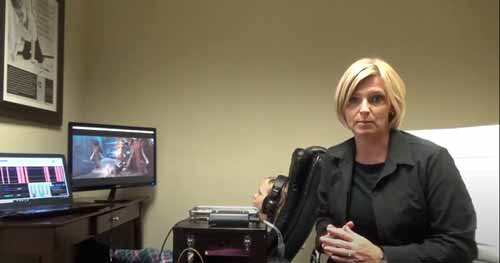5 things to know about a NeurOptimal Neurofeedback therapy session takes place
5 things to know about a NeurOptimal Neurofeedback therapy session takes place
Neurofeedback is a type of biofeedback that uses real-time displays of brain activity to teach people how to change their own brain waves. Neurofeedback is a process that can be used to help people learn how to control their brain waves. It is a type of biofeedback that allows people to see their brain waves in real time. This can help them to understand how their thoughts and emotions are affecting their brain activity.
During a therapy session, the patient will be seated in front of a computer and will be asked to complete some simple tasks. The therapist will then analyze the data collected by the computer and make adjustments to the neurofeedback program accordingly. The patient may experience some mild sensations during the session, but there is no pain or discomfort involved. Most sessions last around 30 minutes, but this may vary depending on the needs of the individual.

1. What is NeurOptimal Neurofeedback and how does it work
NeurOptimal Neurofeedback is a type of neurofeedback that uses real-time feedback to help individuals learn how to regulate their brain waves. The system works by detecting the brain waves of the patient and then providing feedback in the form of sounds and visuals. This feedback helps the patient to learn how to control their brain waves and achieve a more balanced state.
2. How is a NeurOptimal Neurofeedback therapy session conducted?
During a therapy session, the patient will be seated in front of a computer and will be asked to complete some simple tasks. The therapist will then analyze the data collected by the computer and make adjustments to the neurofeed
3. How do I know if NeurOptimal Neurofeedback is right for me
NeurOptimal Neurofeedback is a form of brain training that can help improve your focus, mood, and energy. It's a non-invasive, drug-free therapy that is safe for both children and adults. If you're interested in trying NeurOptimal Neurofeedback, there are a few things to consider. First, you'll need to schedule a consultation with a trained therapist to see if NeurOptimal Neurofeedback is the right fit for you. During the consultation, you'll discuss your goals and any concerns you have. If you're approved for NeurOptimal Neurofeedback therapy, you'll start by attending a training session.
4. What can I expect during a therapy session
A typical NeurOptimal Neurofeedback therapy session lasts around 30 minutes. During the session, you'll wear a helmet that will monitor your brain waves. The therapist will then provide feedback to help you improve your focus, mood, and energy. You may experience a range of emotions during a therapy session. Some people feel relaxed, while others may feel energized. It's normal to feel a range of emotions during NeurOptimal Neurofeedback therapy.
5. What are the benefits of NeurOptimal Neurofeedback
There are a number of benefits associated with NeurOptimal Neurofeedback. Some of the most common benefits include:- improved focus
- improved mood
- increased energy
- reduced stress and anxiety
- improved sleep quality
NeurOptimal Neurofeedback is a safe and effective way to address many of the symptoms associated with ADHD, autism spectrum disorder, anxiety disorders, PTSD, depression or any other neurological condition. The therapy sessions are quick (usually lasting 30 minutes) and they can be conducted in-office or remotely via Skype. If you’re interested in exploring NeurOptimal Neurofeedback as a treatment option, take a look at Innerwavecenter.
Did you know?
Aromatherapy shows excellent results in the fight against stress and anxiety. Along with other techniques, essential oils are very useful to complement and support neurofeedback therapy. To learn more, read our article Neurofeedback and essential oils: the winning combination?What to Expect at Your Biofeedback Therapy Sessions
Dr. Seth Enos practices at Seattle Children's Hospital. In this video he explains what you can expect from biofeedback therapy.
Testimonials from patients who have undergone NeurOptimal Neurofeedback therapy
Booked a neurofeedback session with Nathan who has been an absolute life saver. I'm in my mid 20s and started experiencing some symptoms of ADHD/ADD as well as anxiety about a year ago, and it's only gotten worse since then. I tried most prescription meds for these conditions but they only worsened the issues, so I stopped taking them all. I then started seeing Nathan for neurofeedback and it has been a total life changer. After a few sessions I felt noticeably more focused, my anxiety decreased and I was able to start thinking more clearly again. If you're considering this therapy, do it! You will not regret it.
"I've been dealing with anxiety and mild depression for years, and nothing has ever worked as well as NeurOptimal. It's like a mental reset button- I feel more clearheaded and focused after every session." - Sarah D., Neurofeedback Patient
I am feeling much better ever since I started NeurOptimal Neurofeedback therapy. The therapist is very helpful and understanding, they are here to help me every step of the way!
“Prior to treatment, I struggled with impulse control and felt like my brain was constantly in a loop of negativity. Today, after just one session, I feel more relaxed and confident.” - Kevin R., Neurofeedback Patient